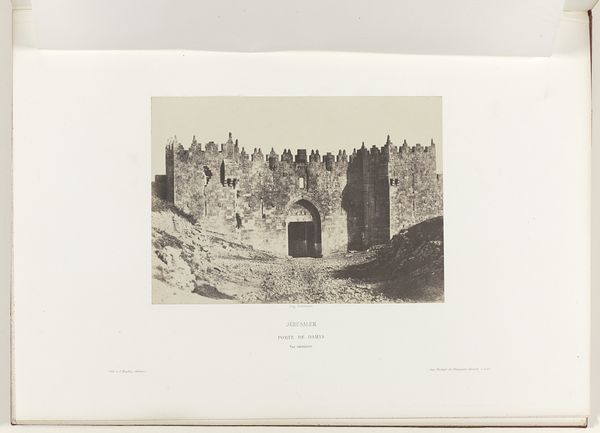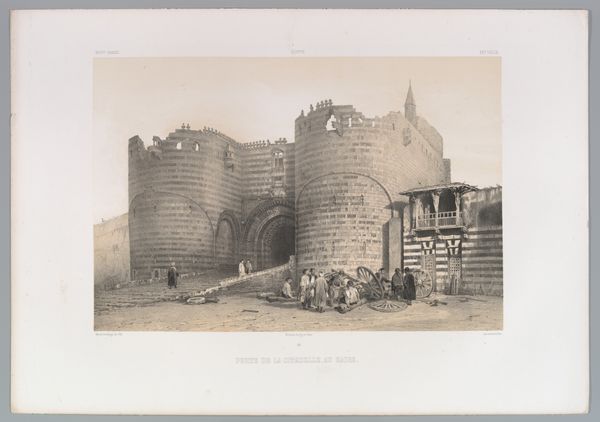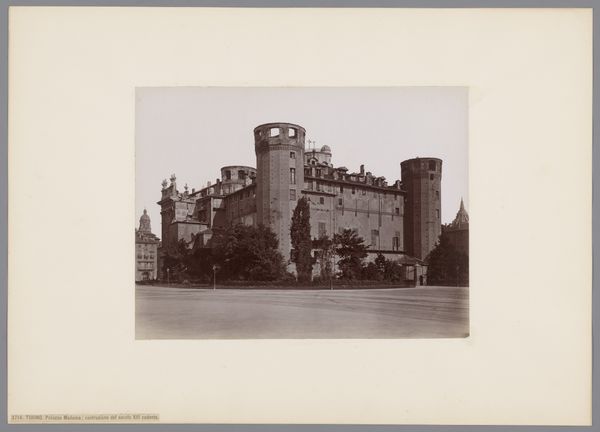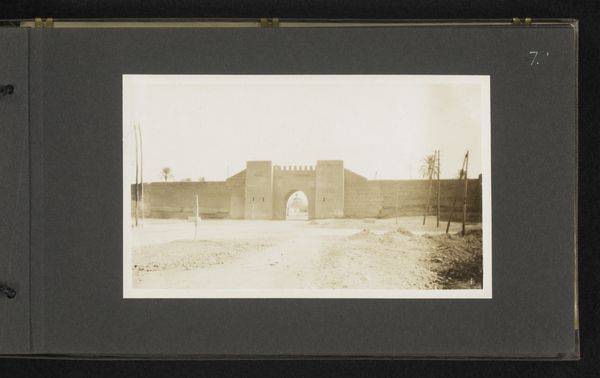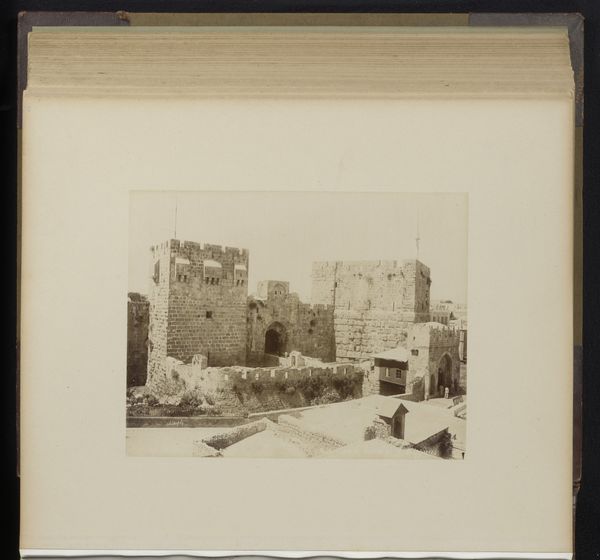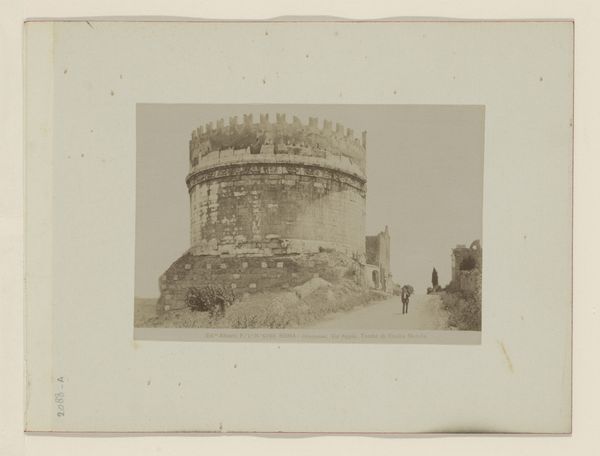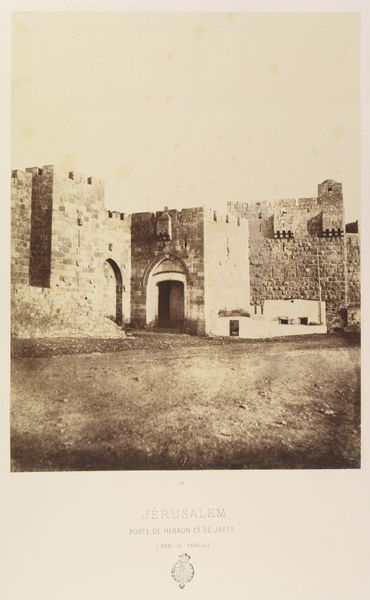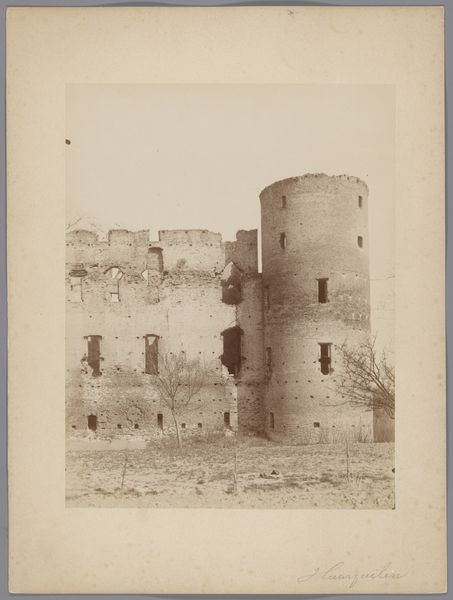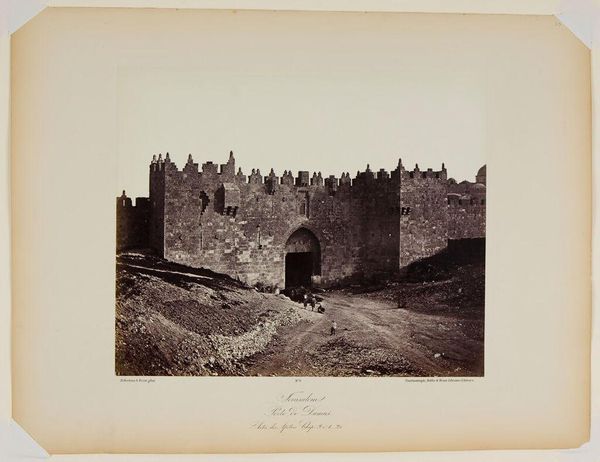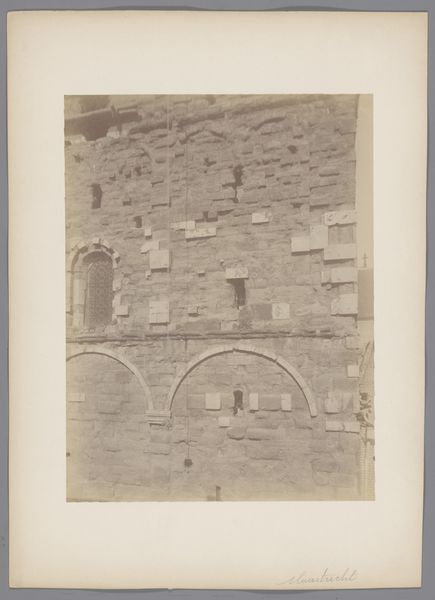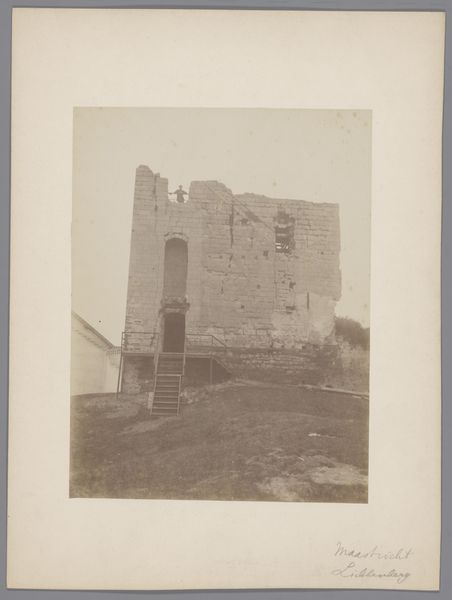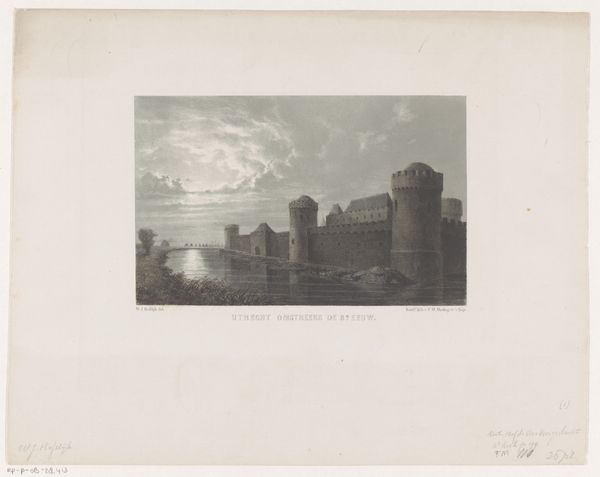
print, photography, gelatin-silver-print
# print
#
landscape
#
photography
#
orientalism
#
gelatin-silver-print
#
cityscape
#
islamic-art
Dimensions: height 218 mm, width 277 mm
Copyright: Rijks Museum: Open Domain
Curator: Let's discuss this gelatin-silver print, "Damascuspoort in Jeruzalem" or Damascus Gate in Jerusalem by Félix Bonfils, taken between 1867 and 1885. It's currently held at the Rijksmuseum. Editor: My immediate reaction is one of imposing stillness. The scale of the gate itself against the small figures creates a strong sense of historical weight, of time suspended. The materiality of the stone dominates. Curator: Bonfils was part of a wave of 19th-century photographers who brought the Middle East to European audiences. These images were hugely influential in shaping perceptions of the "Orient," contributing to a larger cultural phenomenon known as Orientalism. Editor: Exactly, and here we see it so clearly – the very deliberate crafting of an image designed for consumption. The choice of gelatin silver emphasizes texture, and the process itself speaks to the rise of mass-produced imagery and its role in shaping social consciousness. Who exactly was he targeting with images like this? Curator: Primarily, wealthy Europeans eager for exotic views of faraway lands. The photograph acted as both a document and a romanticized vision, reinforcing existing power dynamics and narratives. Editor: The perspective seems to flatten the image, prioritizing the detailed rendering of the stone over depth or atmospheric perspective, making it appear almost like a carefully constructed stage set. We could talk about labor too - about the processes of the making of the materials for the photo. Curator: Yes, that is true, it’s like the figures are actors on it. It's worth noting Bonfils was commercially successful; these images weren't just artistic endeavors but part of a broader economy of representation. Editor: Thinking about the stone, about the architectural labor... the image has so many material traces! I come away from this photograph intrigued by the means of its making, by its role as an object as much as a representation. Curator: For me, understanding its production within the context of 19th-century Orientalism makes it a potent symbol of how photographic imagery can perpetuate specific socio-political narratives.
Comments
No comments
Be the first to comment and join the conversation on the ultimate creative platform.
